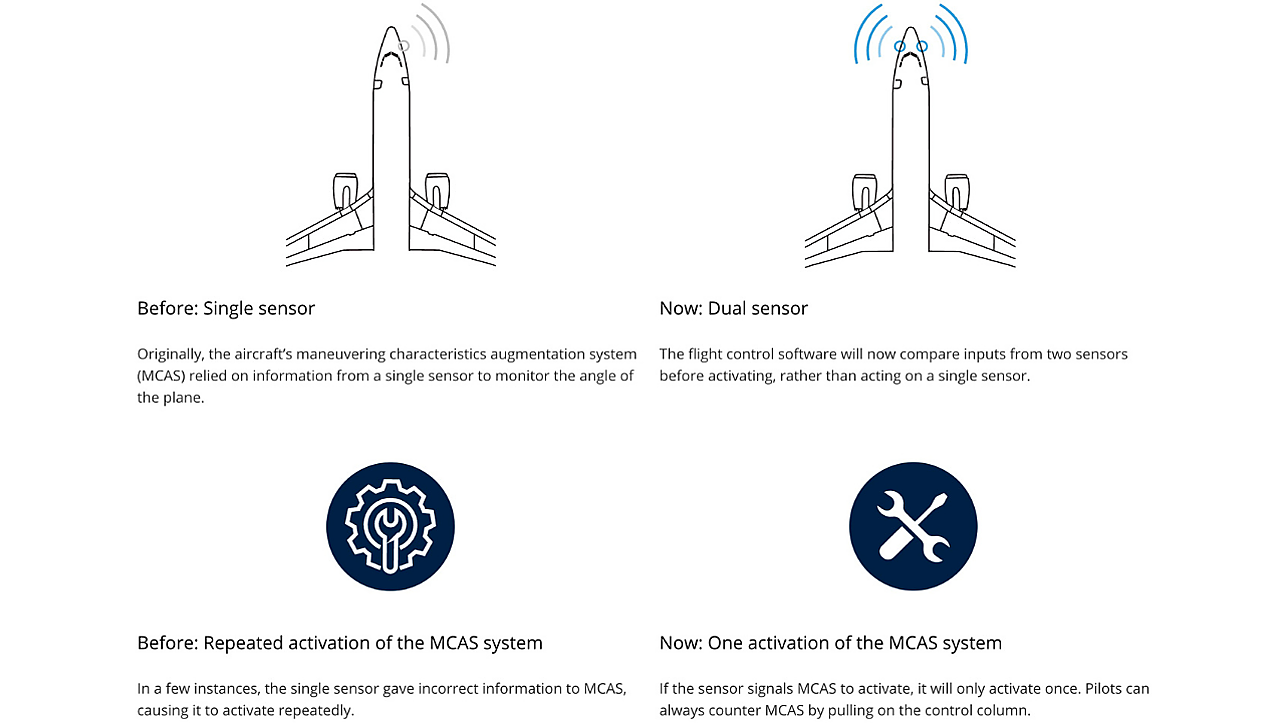
More than 340 Boeing 737 MAX single-jetliners are now flying with airlines worldwide, and the aircraft is expected to resume commercial services with SpiceJet later this month. The company has brought to bear its considerable engineering might and financial resources, to repair the damage to its reputation caused by the worldwide grounding of the 737 MAX fleet since 2019. In the ensuing 20 months, till recertification was obtained from the US Federal Aviation Administration (FAA) in November 2020, Boeing made strenuous efforts and was subjected to relentless scrutiny from aviation regulators worldwide to ensure a safe return to commercial aviation service for the 737 MAX.
Airlines need to implement all required changes as specified by their national aviation regulators (DGCA in India) on airplanes already in their fleets and complete all activation tasks before the resumption of commercial operations. Boeing also has a sizeable number of undelivered 737 MAX aircraft, and each of these airplanes will go through a comprehensive protocol for delivery before delivery. This includes flight-critical ground testing, test flights by the customer and Boeing and detailed customer inspection. The FAA will also conduct in-person, individual reviews of each new airplane before issuing its airworthiness certificate.
Before resuming B737 MAX commercial services, airline operators will also need to obtain regulatory approval for their training programmes, and their pilots must have completed all the required training. In January, Boeing recommended to airline operators that they undertake 737 MAX simulator training in addition to computer-based training for all MAX pilots before the aircraft’s return to service.

Efficient replacement
The 737 MAX belongs to Boeing’s newest family of single-aisle jetliners and first entered service in 2017. They were designed to replace Boeing’s highly successful 737 New Generation (737 NG) Family, which entered service in 1997.
The new 737 MAX featured numerous design changes making it the most technically advanced 737 ever produced by Boeing, with a more efficient structural design, new generation engines delivering double-digit improvements in fuel efficiency and reduced overall aircraft maintenance in addition to modern and spacious cabin interiors. This made it an attractive proposition for existing 737 operators. The upgraded cockpit on the B737 MAX with its new flight deck with advanced avionics and a best-in-class weather radar system also made it popular with pilots, who also appreciated the similarity of its flying and handling characteristics with the 737 NG. Boeing’s key selling point on the 737 MAX, in addition to its improved efficiency and passenger comfort, was that airline customers would require only minimal additional training for their pilots to operate the type. This was an attractive proposition for its airline customers, who would save on training costs. The B737 MAX on entry into service delivered on its promise of improved efficiency, increased passenger comfort and reduced maintenance costs.
Safer than before
The first B737 MAX crash occurred on October 29, 2018, when Lion Air Flight 610 (JT610), crashed shortly after take-off in Jakarta, Indonesia. While the first crash of a brand-new commercial jetliner was a matter of concern, it was similar to the March 10, 2019 crash of Ethiopian Airlines Flight 302, which went down shortly after take-off in Addis Ababa, Ethiopia, which set alarm bells ringing. Once the FAA concluded that the Lion Air and Ethiopian Airlines accidents involved a common cause and identified an unsafe condition that existed in the product which was likely to exist or develop in other products of the same type design, it led to a worldwide grounding of the 737 MAX that same month.

In its quest for enhanced performance with improved fuel efficiency, Boeing decided on CFM International’s LEAP-1B engine as the 737 MAX’s sole powerplant. However, due to their size, the larger and more powerful LEAP-1B engines had to be fitted higher and farther forward on the wing than the CFM 56 engines on the 737 NG. Boeing had designed the 737 MAX to ensure that its pilots would find the aircraft’s handling very similar to the 737 NG. According to the information posted on Boeing’s website, “The Manoeuvring Characteristics Augmentation System (MCAS) flight control law was designed and certified for newer 737 models to provide consistent handling qualities in unusual flight conditions.” In essence, MCAS compensated for the aerodynamic effects of the 737 MAX’s larger and more forward-located engines by providing signals that moved the aircraft’s horizontal stabilizer (at elevated Angles of Attack), providing the required column feel to the pilot when flying in manual mode (without autopilot).
The MCAS flight control law was to be activated only during elevated Angles of Attack (AOA - the angle between the direction of the aircraft’s nose and the oncoming wind) in certain unusual flight conditions only. It was not expected to operate during flight conditions encountered during regular commercial flights. Boeing now says that with the changes it has made to the airplane, most flight crews are likely never to experience a situation requiring activation of MCAS.
Boeing’s solution for the safe return of the 737 MAX has been to redesign how the airplane’s flight control computers process the information provided by the AOA sensors. As per Boeing’s original design, MCAS relied on a single AOA sensor to monitor the airplane’s angle. Unfortunately, the incorrect information provided by a single AOA sensor to the MCAS caused it to activate in both crashes. In both cases, the incorrect high AOA reported by the sensor caused repeated engagements of MCAS, resulting in loss of control of the aircraft.
Boeing’s new MCAS design ensures that the airplane’s flight control computers now compare information from both AOA sensors, thereby removing the possibility of erroneous inputs from a single sensor, providing an additional layer of protection. Unlike previously, 737 MAX pilots can override MCAS at any time as it will now only activate once and never provide more input than can be counteracted by the pilot using the control column.